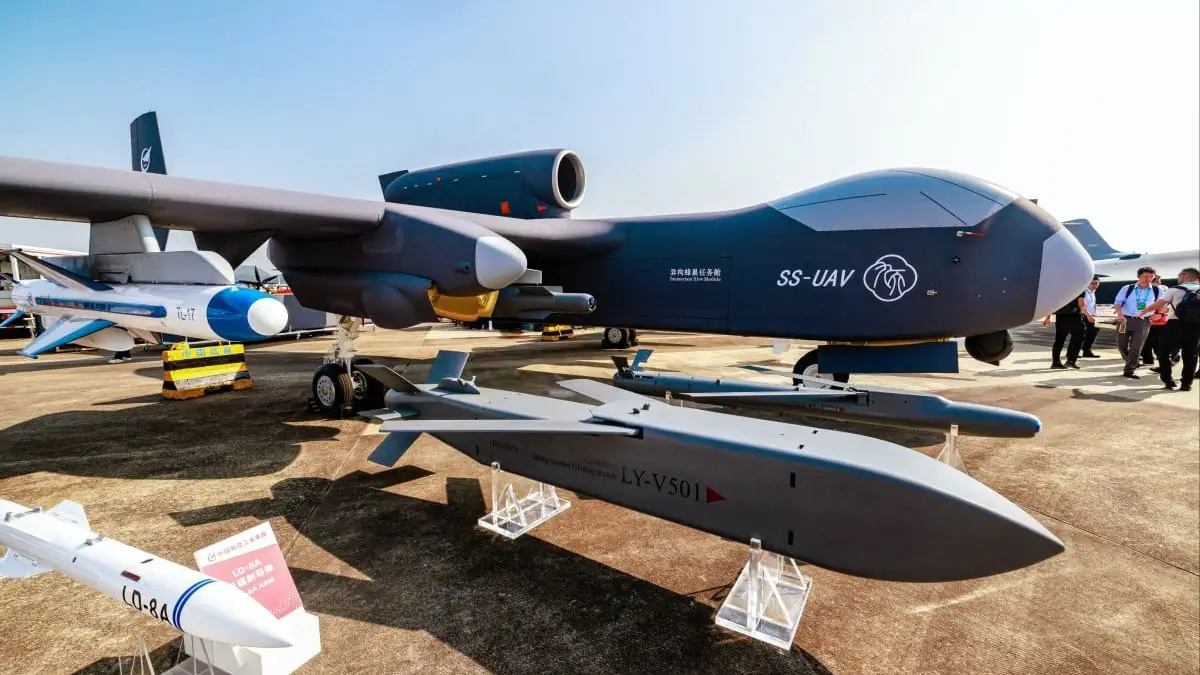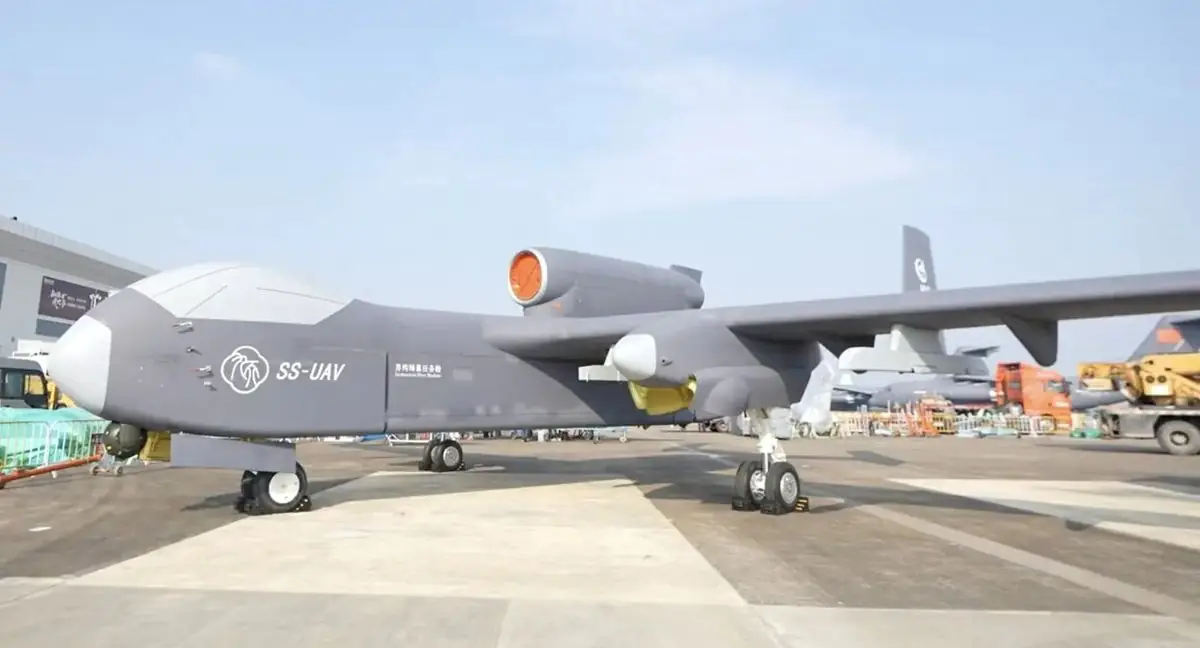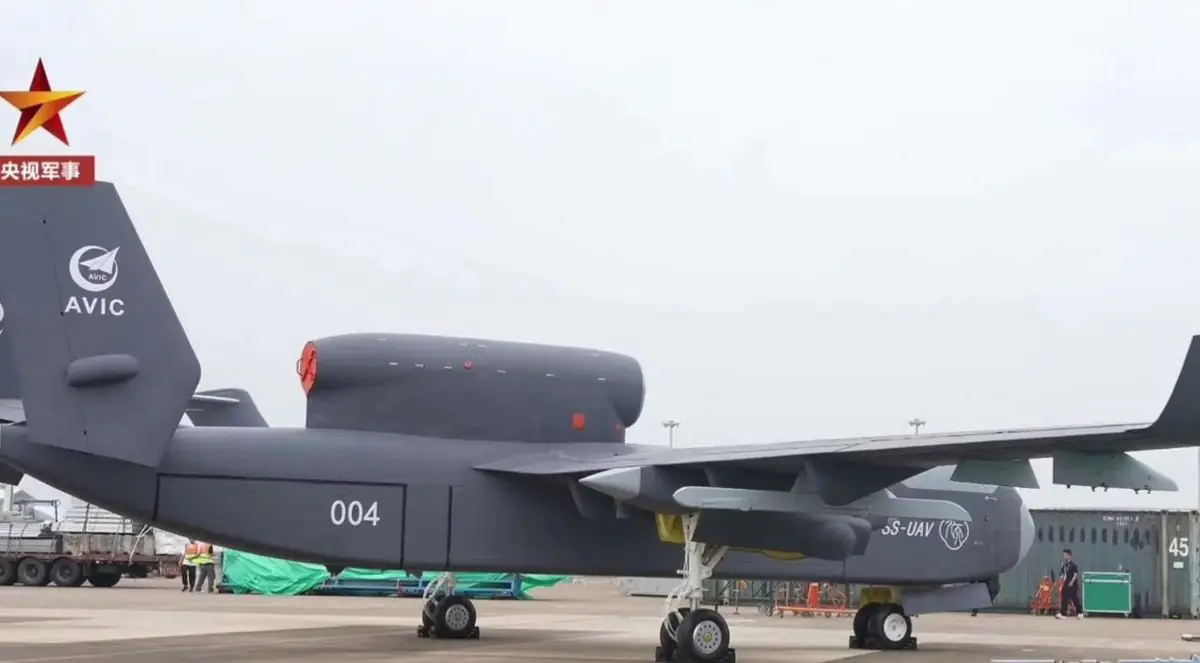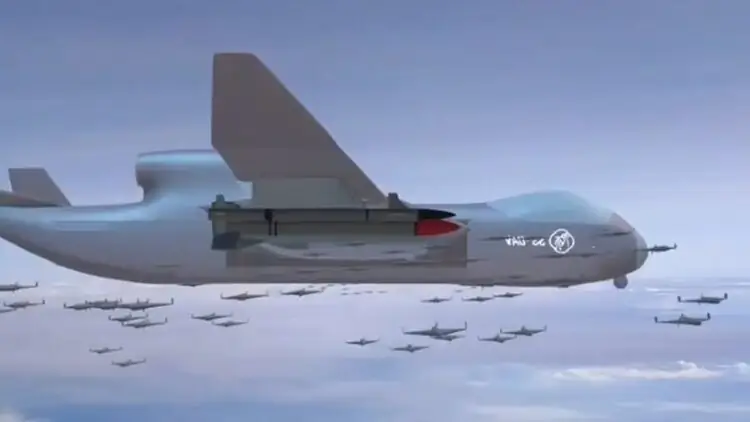China’s Jiutian SS-UAV drone carrier is being prepared for its first mission, which is scheduled to take place next month. This initial flight will mark the beginning of a series of test runs. If successful, the aircraft is expected to be adopted by the People’s Liberation Army as a platform for deploying various types of drones.

The Jiutian – translated from Chinese as “High Sky” – is a long-range unmanned aerial vehicle first unveiled at China’s major airshow in Zhuhai last November. It has a flight range of up to 7,000 kilometers and operates at altitudes reaching 15,000 meters. Powered by a jet engine, the UAV can carry up to 6 tons of payload, including smaller drones and munitions. It has a maximum takeoff weight of 16 tons and a wingspan of 25 meters. Its high-altitude capabilities allow it to fly above many medium-range air defense systems currently deployed around the world.
The Jiutian SS-UAV can deploy up to 100 small drones or munitions – including loitering munitions – from both sides of its fuselage. If fully deployed, the aircraft could play a key role in swarm operations, acting as a command platform for networked drones working together on coordinated military tasks or suppressing enemy air defense systems. The drone is equipped with eight hardpoints for carrying a variety of payloads. Its capabilities also include reconnaissance, surveillance, target acquisition, and electronic warfare.

The Jiutian SS-UAV features a modular cargo bay, allowing it to be adapted for a wide range of roles. In addition to military applications, it’s designed to handle transport missions in challenging or high-security environments. Other potential uses include border patrol, maritime airspace monitoring to support coast guard operations, search and rescue missions, and surveillance of land and resource areas.

In recent years, China has been developing increasingly advanced and capable drones, reflecting their growing importance in modern warfare. The Jiutian heavy drone carrier is expected to join China’s expanding lineup of UAVs, alongside models like the stealth-oriented CH-7 combat drone and the anti-submarine Wing Loong-X. Some analysts see Jiutian as a potential rival to U.S. platforms such as the RQ-4 Global Hawk and MQ-9 Reaper.
The Global Hawk, for example, is designed for high-altitude reconnaissance missions up to 18,000 meters and shares a similar maximum takeoff weight with Jiutian – but it lacks strike capabilities. Meanwhile, the MQ-9 Reaper is a versatile, medium-altitude drone with a much lower takeoff weight of around 5 tons.
Source: scmp









